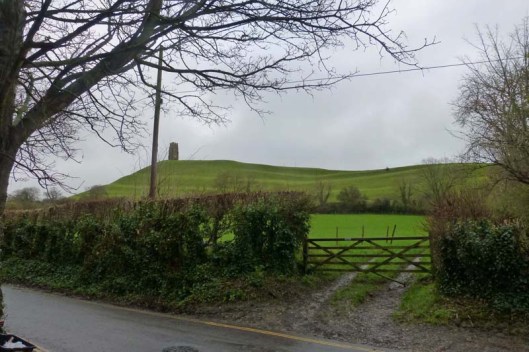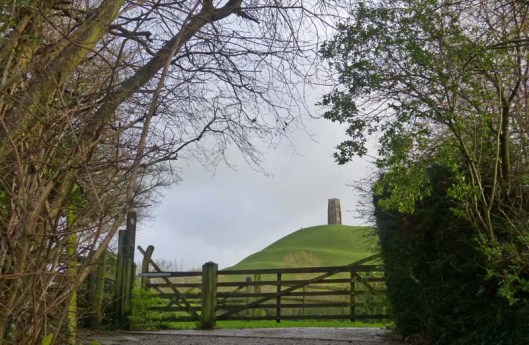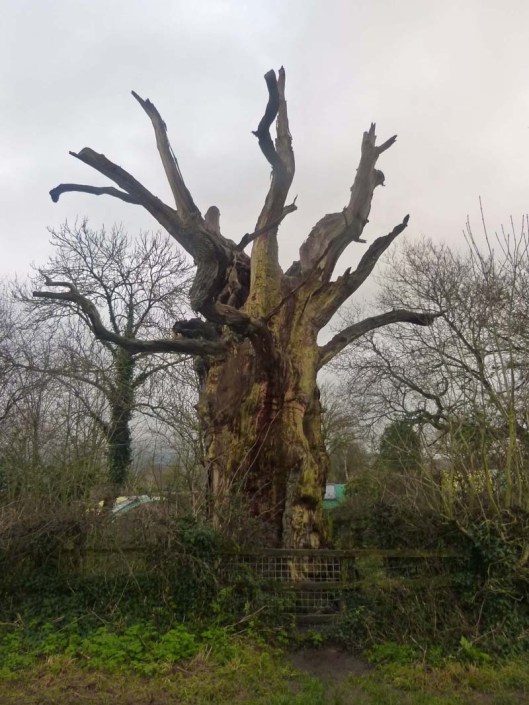Tags
Bushey Coombe, Glastonbury, Glastonbury Antiquarian Society, Glastonbury Tor, Gog and Magog, Mendip District Council, Norwood Park Farm, Paddington Farm, Paddington Farm Trust, Somerset Levels, Somerset Moors, Stone Down Hill
The weather forecast yesterday afternoon indicated that there should be two hours when I could get out for a walk without getting drenched, so I grasped the opportunity with both legs – while covering the rest of me with a waterproof just in case. To the bottom of my road first, where I was not surprised to find that the nearest bit of the Somerset Levels (technically Somerset Moors here) due south was waterlogged, as it frequently is at this season. Up Cinnamon Lane to the very busy National Freight Route A 361, east-west at this point, crossing which involves taking your life in your hands. But there is no alternative if one wants to walk up or – as I did yesterday – around Glastonbury Tor.
Up Cinnamon Lane to the very busy National Freight Route A 361, east-west at this point, crossing which involves taking your life in your hands. But there is no alternative if one wants to walk up or – as I did yesterday – around Glastonbury Tor.
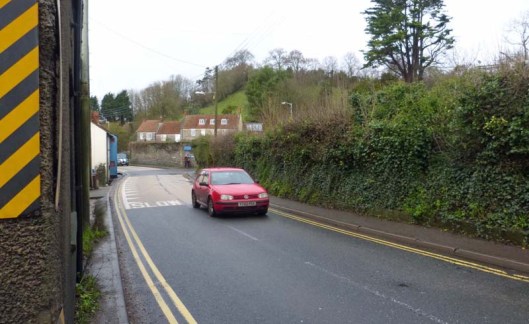 In essence my walk was to be a clockwise circumnavigation of the Tor, which is 158 metres at its highest (plus tower), and Stone Down Hill. The waterlogged fields were at about 5 metres above sea level, and my walk took me to about 50 metres maximum. Higher ground was to my right and lower to the left.
In essence my walk was to be a clockwise circumnavigation of the Tor, which is 158 metres at its highest (plus tower), and Stone Down Hill. The waterlogged fields were at about 5 metres above sea level, and my walk took me to about 50 metres maximum. Higher ground was to my right and lower to the left.
In Wellhouse Lane this is to be seen on the side of one of the few houses there. Off left onto Lypyatt Lane, with a right and backward glance to the Tor and its tower, the only remaining part of the 14th century St Michael’s Church, of which the rest was demolished at the Dissolution of the monasteries in 1539. (An earlier, wooden, church was destroyed in an earthquake in the 1275.) Read more here.
Off left onto Lypyatt Lane, with a right and backward glance to the Tor and its tower, the only remaining part of the 14th century St Michael’s Church, of which the rest was demolished at the Dissolution of the monasteries in 1539. (An earlier, wooden, church was destroyed in an earthquake in the 1275.) Read more here.
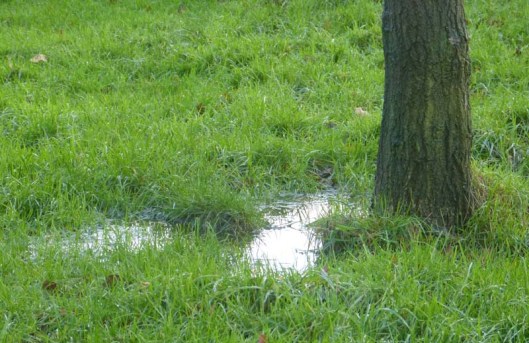 My walk next took me through Paddington Farm which is a working organic farm providing free educational facilities, especially for disadvantaged children.
My walk next took me through Paddington Farm which is a working organic farm providing free educational facilities, especially for disadvantaged children.


Norwood Park Farm is now a dairy farm. The house is Grade II listed, and was built in 1457 for the privacy and sport of the Abbots of Glastonbury. They had it alright, abbots, in those days.
Unfortunately, 6 minutes of this circuit involve walking back along the aforementioned noisy and busy A361, at the point at which it goes alongside Millfield’s Preparatory School. Needless to say, traffic does not respect the 40 and 50 mph speed limits. 

 The children have a bridge they can use to cross the road, but this is not accessible to the general public as far as I know, and once more I took my life in my hands.
The children have a bridge they can use to cross the road, but this is not accessible to the general public as far as I know, and once more I took my life in my hands.
 Once over I was able to look back to my right for a further view of the Tor, and then I noticed, not for the first time, that spring seems to be well advanced. (Or winter never really came, though there’s plenty of time yet.)
Once over I was able to look back to my right for a further view of the Tor, and then I noticed, not for the first time, that spring seems to be well advanced. (Or winter never really came, though there’s plenty of time yet.)
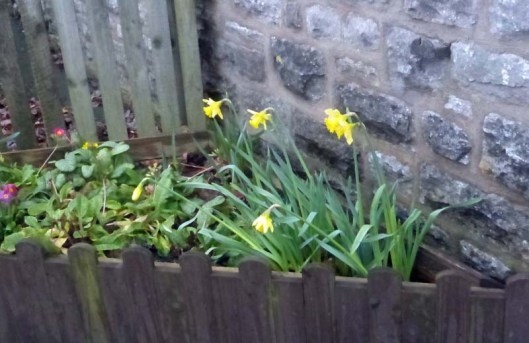
 Over to my left, to the south, as I embarked on the last few minutes of my walk, I could see the Polden Hills, the lowest range in Somerset.
Over to my left, to the south, as I embarked on the last few minutes of my walk, I could see the Polden Hills, the lowest range in Somerset.  And of course, the Tor was still to my right.Those last few minutes of my walk were pleasantly prolonged as coming in the other direction was my friend Neill, custodian of the Glastonbury Antiquarian Society’s website. He entertained me with an account of the earliest local excavations of the Tor, by one John Skinner, in the early 19th century. Extracts from Skinner’s Journal here.
And of course, the Tor was still to my right.Those last few minutes of my walk were pleasantly prolonged as coming in the other direction was my friend Neill, custodian of the Glastonbury Antiquarian Society’s website. He entertained me with an account of the earliest local excavations of the Tor, by one John Skinner, in the early 19th century. Extracts from Skinner’s Journal here. While we chatted it started, and stopped, fine drizzling.
While we chatted it started, and stopped, fine drizzling. When I set off again, a yellow helicopter circled for a minute or two,
When I set off again, a yellow helicopter circled for a minute or two, I passed a huge bonfire,
I passed a huge bonfire,
and I took a final look at the Tor between two of my neighbours’ houses. It started raining shortly afterwards as night fell.

